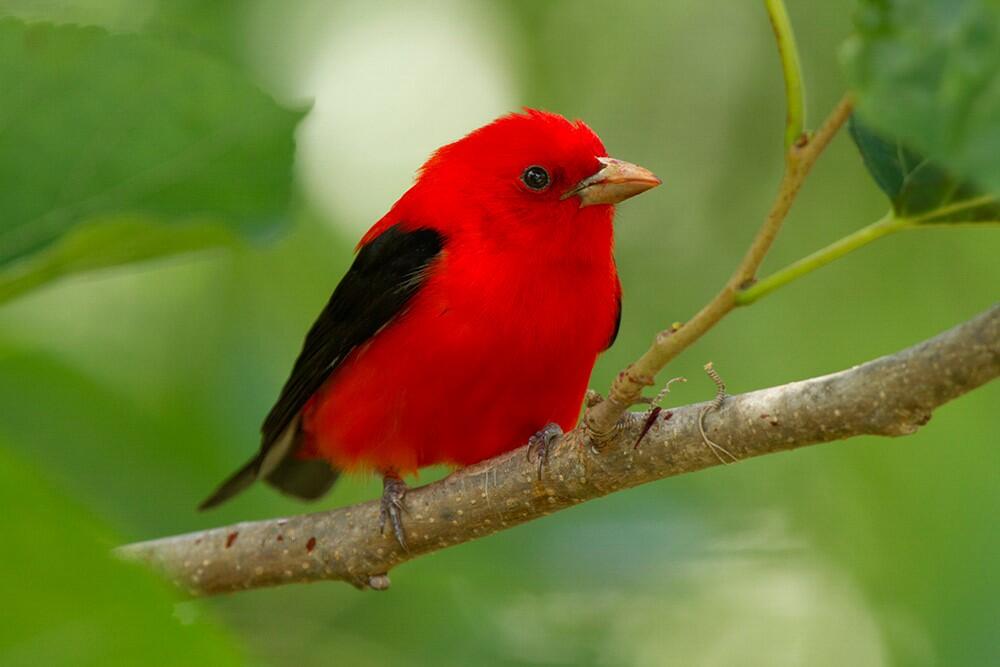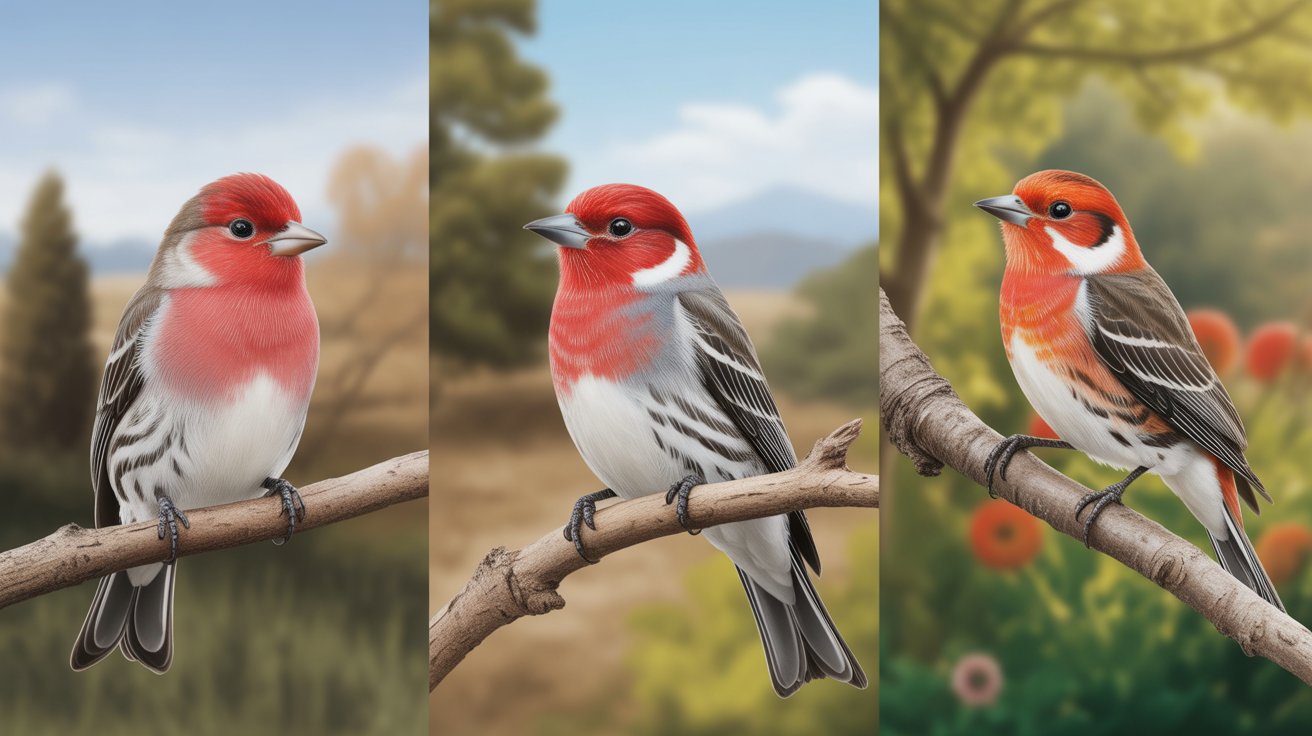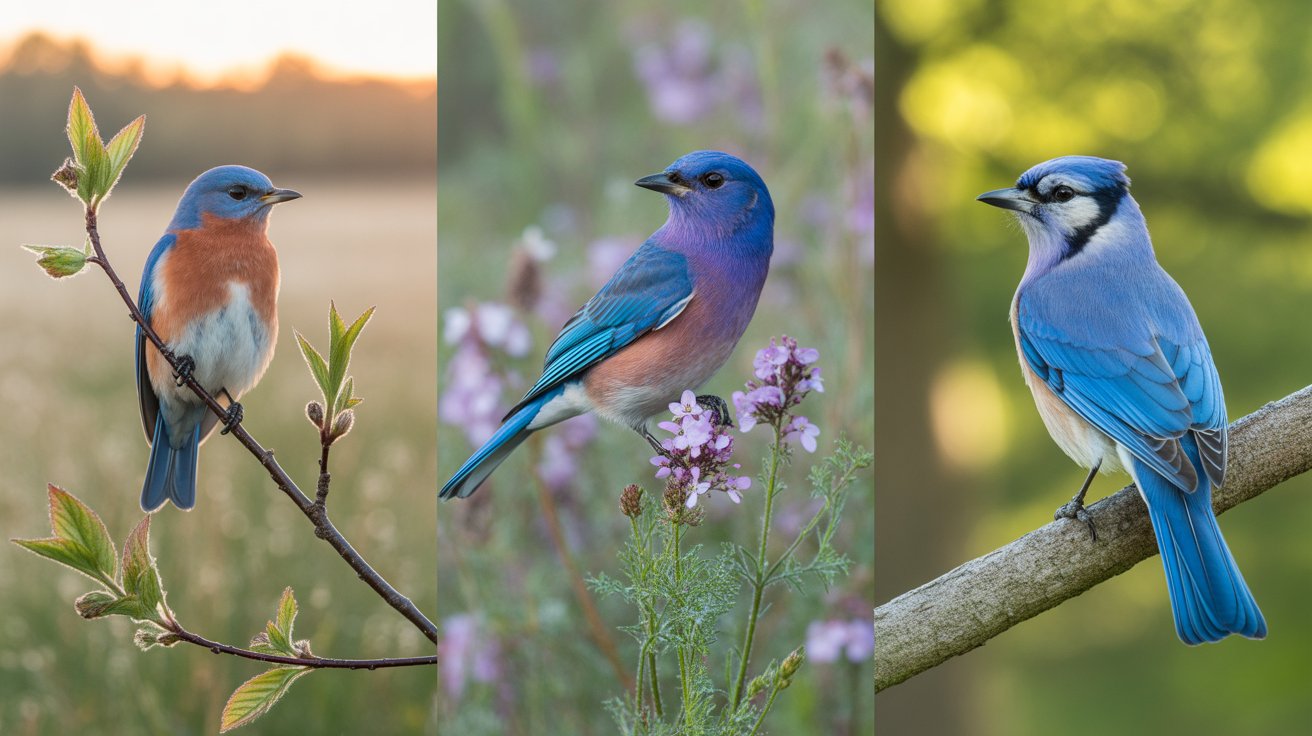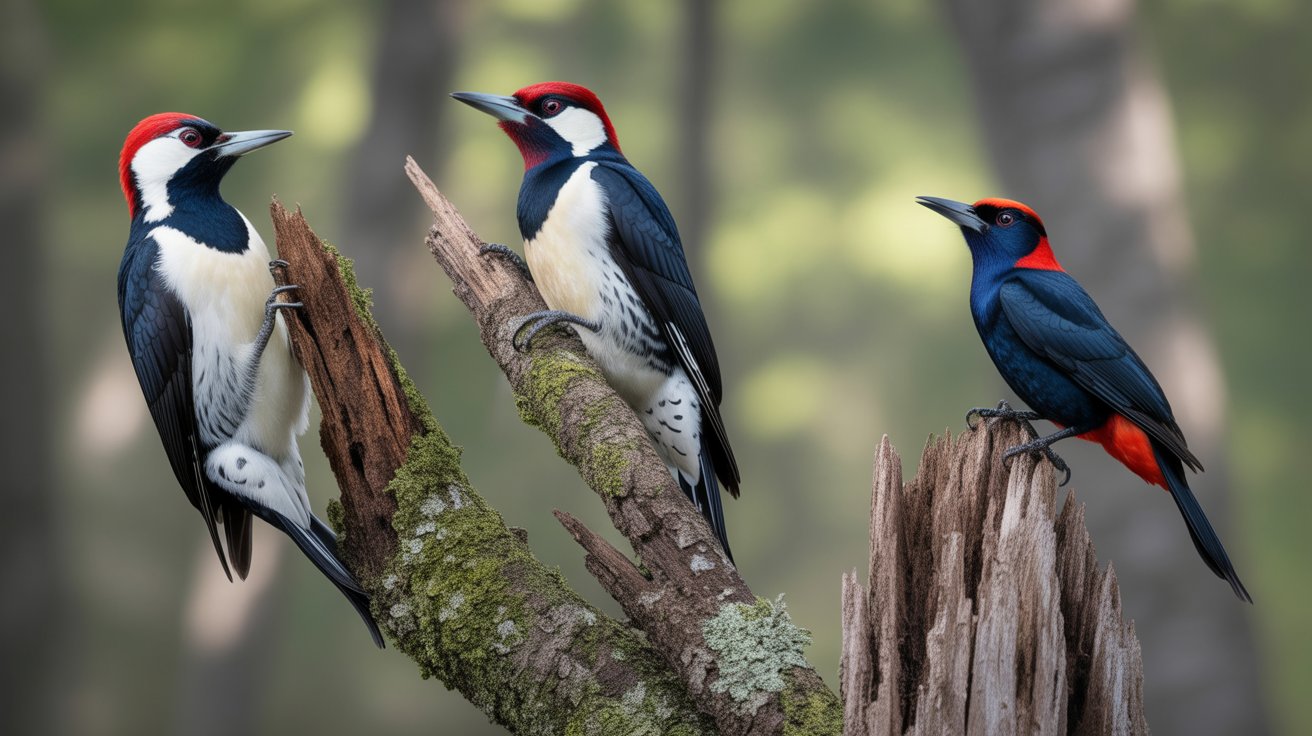If you’ve ever caught a flash of blazing red darting through the treetops in summer, you might’ve spotted the stunning Scarlet Tanager. With its fiery plumage and striking contrast against deep green foliage, this bird is one of North America’s most eye-catching songbirds. But there’s much more to the Scarlet Tanager than just its good looks.
In this guide, you’re going to get up close with everything about this elusive forest dweller—how it looks, where it lives, what it eats, and how it behaves. Whether you’re a backyard birder, a photographer hoping to capture its vibrant hues, or simply someone who loves exploring bird species, this article is crafted to help you connect with this beautiful bird on a deeper level.
You’ll find details about its classification, physical features, unique behaviors, and even a few surprising facts. So, if you’re ready to dive into the fascinating world of the Scarlet Tanager, let’s begin!
Scarlet Tanager (Piranga olivacea)
Scientific Classification
The Scarlet Tanager belongs to the Cardinalidae family, which includes other colorful songbirds like cardinals and grosbeaks. Despite its name, it’s not a true tanager of the tropical Thraupidae family but is more closely related to cardinals.
- Kingdom: Animalia
- Phylum: Chordata
- Class: Aves
- Order: Passeriformes
- Family: Cardinalidae
- Genus: Piranga
- Species: P. olivacea
Physical Description
The male Scarlet Tanager is a visual marvel during the breeding season. You’ll notice its brilliant scarlet-red body contrasted with jet-black wings and tail, making it easy to identify—if you’re lucky enough to spot it. Females and non-breeding males, on the other hand, wear more subdued olive-yellow plumage with dark wings, helping them blend in with the forest.
This bird has a medium-sized body, with a stout, slightly hooked bill ideal for eating both insects and fruits. The eyes are dark and expressive, and it does not have a crest like some of its Cardinalidae cousins.
- Length: 6.3 to 7.5 inches (16–19 cm)
- Wingspan: 9.8 to 11.4 inches (25–29 cm)
- Weight: 0.8 to 1.3 ounces (23–38 grams)
Habitat and Distribution
Scarlet Tanagers prefer the deciduous forests of eastern North America during the breeding season. You’ll typically find them in mature woodlands, especially those with large expanses of oak, maple, and beech trees. They nest high in the canopy, which can make them hard to spot despite their bright color.
When fall arrives, they migrate to northwestern South America, including countries like Ecuador, Peru, and Colombia. During migration, they may pass through Central America and parts of the Gulf Coast.
They rely heavily on intact forest cover both in their summer and winter homes, making them particularly vulnerable to deforestation and habitat fragmentation.
Behavior
Scarlet Tanagers are generally solitary and secretive, especially outside the breeding season. Males are known for their distinctive, raspy song that sounds somewhat like a robin with a sore throat. Their song plays a crucial role in defending territory and attracting mates.
They spend much of their time foraging in the treetops, hopping from branch to branch in search of food. During breeding season, males may be more visible as they sing from exposed perches to advertise their presence.
They are not aggressive birds but will defend their territory and nest site from intruders. While generally calm, they show remarkable endurance during migration, covering thousands of miles across the Americas.
Diet
The Scarlet Tanager is an omnivore, feeding on both insects and fruits depending on the season. In spring and summer, they focus heavily on protein-rich insects, which are essential during breeding and chick-rearing.
Their diet includes:
- Caterpillars
- Beetles
- Wasps and bees
- Spiders
- Moths
- Snails
In fall and during migration, they shift toward fruit consumption, feeding on:
- Berries (mulberry, elderberry)
- Wild grapes
- Figs
- Tropical fruits in their wintering grounds
Their ability to switch diets helps them survive long migrations and varying seasonal food availability.
Breeding and Nesting
Scarlet Tanagers breed between May and July, usually raising one brood per season. The female is solely responsible for building the nest, which is a shallow cup made of twigs, grasses, and rootlets, often placed high in the trees on a horizontal branch.
After mating, the female lays 3 to 5 pale blue or greenish eggs, which she incubates for about 13 to 14 days. Once hatched, both parents participate in feeding the chicks, which fledge the nest roughly 9 to 15 days later.
Interestingly, Scarlet Tanagers are sometimes victims of brood parasitism by Brown-headed Cowbirds, which lay their eggs in tanager nests. However, tanagers often recognize and reject these impostor eggs.
Interesting Facts
- Color transformation: After breeding, the male molts into a greenish-yellow non-breeding plumage, making it look more like the female. This makes them harder to identify outside of summer.
- Migratory marvel: Scarlet Tanagers travel over 5,000 miles round-trip during migration between North and South America.
- Longevity: The oldest known wild Scarlet Tanager lived to be 11 years old.
- Sensitive to light: These birds navigate using the stars and may become disoriented by artificial lighting during migration.
- Unseen beauty: Even though they are brilliantly colored, Scarlet Tanagers can be hard to spot because they prefer staying high in dense foliage.
Frequently Asked Questions
1. What is the best time to see a Scarlet Tanager?
The best time to see a Scarlet Tanager is during late spring and early summer (May to July) when males are in their bright breeding plumage and singing actively.
2. Are Scarlet Tanagers endangered?
Scarlet Tanagers are not currently endangered, but they are considered sensitive to habitat loss, especially due to deforestation in both breeding and wintering grounds.
3. How can I attract Scarlet Tanagers to my backyard?
To attract Scarlet Tanagers, plant native berry-producing shrubs, avoid pesticides, and provide a quiet, wooded area. They may also visit birdbaths during migration.
4. Do male and female Scarlet Tanagers look different?
Yes, males in breeding season are bright red with black wings, while females and non-breeding males are olive-yellow with darker wings.
5. Where do Scarlet Tanagers go in winter?
Scarlet Tanagers migrate to South America, particularly the Andean foothills of countries like Colombia, Ecuador, and Peru, where they stay until spring.
Conclusion
The Scarlet Tanager is truly a gem of the treetops—a bird that captivates with its dazzling plumage and rewards patient birders with unforgettable sightings. From its long-distance migrations to its secretive nesting habits, there’s so much to appreciate about this colorful songbird.
If you want to spot one, your best bet is to head to a mature deciduous forest in spring or early summer and listen carefully for its distinctive, scratchy song. And if you’re working on making your yard more bird-friendly, offering native plants and insect-friendly spaces might just earn you a visit.
Understanding and protecting the Scarlet Tanager not only adds joy to your birdwatching experience but also helps conserve the rich biodiversity of our forests. So the next time you venture outdoors, keep your eyes on the treetops—you never know when a burst of scarlet will flash into view.







